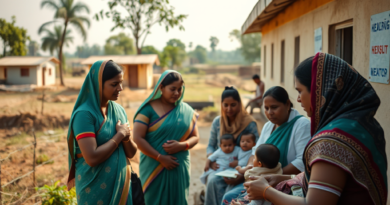Maharaja Surajmal
Contents
Context:
Recently, the Prime Minister has paid tributes to Maharaja Surajmal on his Jayanti.
About Maharaja Surajmal:
- Maharaja Suraj Mal Sujan Singh, was born on 13 February 1707
- He was a Hindu Jat ruler of Bharatpur in Rajasthan, India.
- He visualized “India as one nation” and devoted his life in forging national integration.
- Under him, the Jat rule covered the present-day national capital Delhi and districts of Agra, Aligarh, Alwar, Bharatpur, Bulandshahr, Dholpur, Etah, Etawa, Faridabad, Firozabad, Ghaziabad, Gurgaon, Hathras, Jhajjar, Kanpur, Mainpuri, Mathura, Mewat, Meerut, Muzaffarnagar, Palwal, Rewari, and Rohtak.
- Maharaja Surajmal considered farmers as the most important section of the society and had a lot of respect for them.
- He personally identified the problems of the farmers and introduced reforms to rectify them.
- Beliefs:
- On Religion: Maharaja Surajmal believed that humanity is the only religion of man. He united various factions of Hindus and Muslims and kept them together.
- On Racism: He was against racism and even employed people according to their abilities in higher posts, irrespective of their races.
- On Farmer: Maharaja Surajmal believed that the farmer is the most important part of society. He heard the problems of farmers and introduced reforms to rectify them.
- A contemporary historian had described him as “the Plato of the Jat tribe” and by a modern writer as the “Jat Odysseus”, because of his “political sagacity, steady intellect and clear vision”.
- The Jats, under Suraj Mal, overran the Mughal garrison at Agra. Suraj Mal was killed in an ambush by the Rohilla troops on the night of 25 December 1763 near Hindon River, Shahadra, Delhi.
- In addition to the troops stationed at his forts, he had an army of 25,000 infantry and 15,000 cavalry when he died
- Some institutions that have been named after him include the Maharaja Surajmal Institute of Technology and Maharaja Surajmal Brij University, Bharatpur.
Military Adventures
- In the Princely State of Jaipur: After the death of Maharaja Jai Singh (a friend of Surajmal), his two sons- Ishwari Singh and Madho Singh fought for the throne of the Jaipur.
- In this fight, Surajmal Supported elder son Ishwari Singh got victorious. But the battle did not end here.
- Later, Madho Singh returned to the battlefield with the Marathas, Rathores, and Sisodia Kings of Udaipur.
- But Surajmal with his 10000 army men arrived in support of Ishwari Singh and defeated the Madho singh’s army and he got the royal text of Jaipur.
- After this battle, the dunk of Maharaja Surajmal started ringing all over India.
- With Nawab of Delhi: In 1750, he defeated the Mughal Army of Salabat Khan and forced the latter to accept all his terms.
- In support of Safdar Jung, he plundered the old Delhi during the civil war among the Mughals.
- Extension of Jurisdiction: In 1753, Maharaja Surajmal extended his jurisdiction to Delhi and Feroz Shah Kotla.
- Conflict with Marathas: Above extension of Jurisdiction angered Ghaziuddin, who instigated the Maratha chieftains against Surajmal.
- Marathas attacked Bharatpur and surrounded the fort of Kumher for several months. But this did not end with anyone’s victory rather Marathas made a treaty with Surajmal.
- Impenetrable Lohagarh Fort: It was built by the Maharaja Surajmal and even after attacking 13 times, Britishers could not penetrate it.
- Third Battle of Panipat: The Third Battle of Panipat was fought between the Marathas and the invading armies of Afghan general Ahmed Shah Abdali in 1761.
- The battle, fought about 90 km north of Delhi, was won by the Afghans and left about 40,000 troops of the Marathas dead.
- Maharaja Surajmal was among those who played key roles in the battle.
- After the battle, the Marathas lost their preeminent position in north India, which ultimately paved the way for British colonial powers to take over.
Source: PIB
You can find many articles on Modern India (part of GS I) in our website. Go through these articles share with your friends and post your views in comment section.
Discover more from Simplified UPSC
Subscribe to get the latest posts sent to your email.



